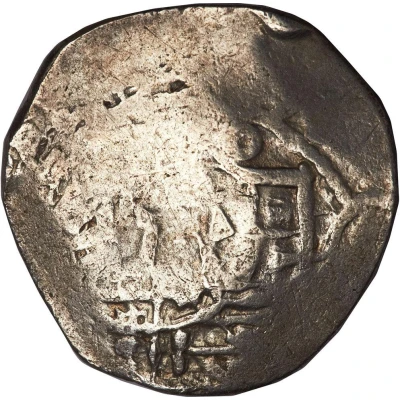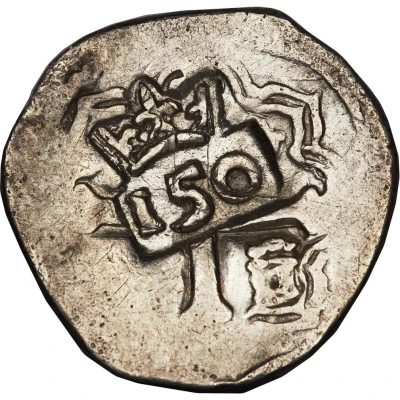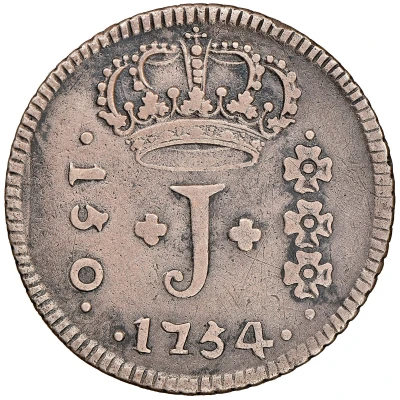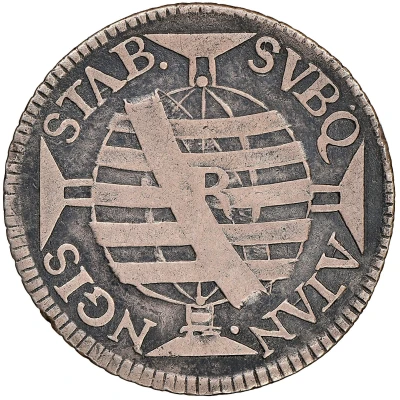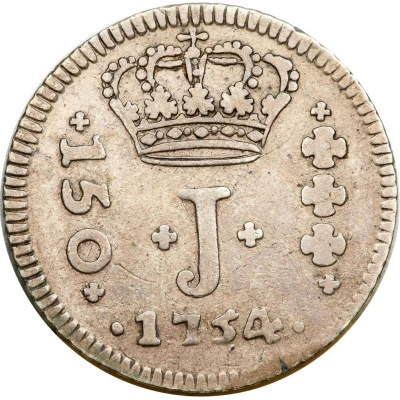
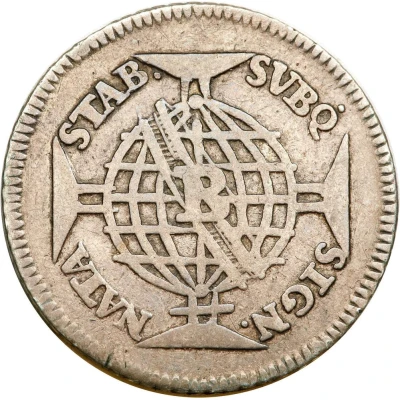

150 Réis - José I Province of Minas Gerais; Bahia
| Silver (.917) | 4.52 g | 25 mm |
| Issuer | Brazil |
|---|---|
| King | Joseph I the Reformer (1750-1777) |
| Type | Standard circulation coin |
| Years | 1752-1758 |
| Value | 150 Réis |
| Currency | Real (1654-1799) |
| Composition | Silver (.917) |
| Weight | 4.52 g |
| Diameter | 25 mm |
| Shape | Round |
| Technique | Milled |
| Orientation | Medal alignment ↑↑ |
| Demonetized | Yes |
| Updated | 2024-10-04 |
| Numista | N#17043 |
|---|---|
| Rarity index | 87% |
Reverse
An armillary sphere in front of the Order of Christ cross, with the B mintmark.
Script: Latin
Lettering: SVBQ. SIGN. NATA. STAB.
Translation: Born under a steady sign.
Edge
Reeded.
Comment
Minted in Bahia, Brazil, as a provincial coin to circulate in the Province of Minas Gerais.
Series of J:
In 1750, D. José prohibited the circulation of gold coins in the mining regions, considering that commercial transactions in those regions could be carried out with marked gold bars, and gold powder. To meet the needs of small trade in the region, he ordered the mints of Bahia and Rio de Janeiro to mint provincial silver and copper coins. In 1752, however, at the suggestion of the governor of the captaincy of Minas, he determined that silver coins with the values of 600, 300, 150 and 75 Réis should also be minted, given that prices in the mining regions were established in terms of octaves and their sub-multiples, the octave being worth of gold, not fifth, 1200 Réis.
To avoid confusion with the provincial silver coins of 640, 320, 160 and 80 Reis, due to the proximity of the values, in the new coins the coat of arms of Portugal was replaced by a "J" surmounted by a crown. These are hard to find coins.
Interesting fact
One interesting fact about the 150 Réis - José I coin from Brazil is that it was issued during a time of great economic and political change in the country. The coin was minted during the reign of King José I, who ruled Portugal and its colonies from 1750 to 1777. During this period, Brazil was experiencing a significant increase in gold and diamond production, which led to an economic boom and a growth in trade with Europe. The 150 Réis coin was likely used in everyday transactions during this time, and its silver content made it a valuable and reliable form of currency. Today, the coin is a sought-after collector's item and a piece of Brazilian history.
